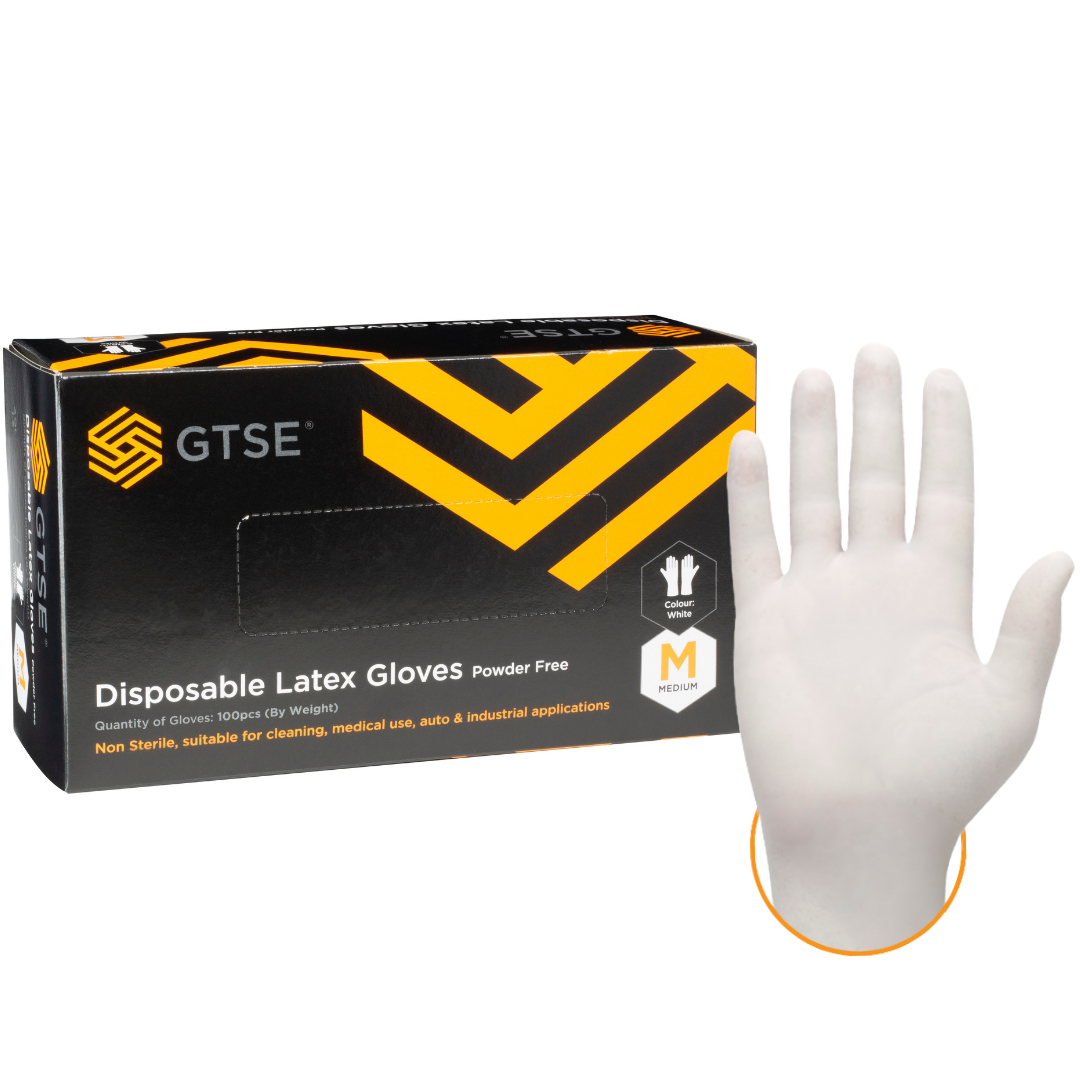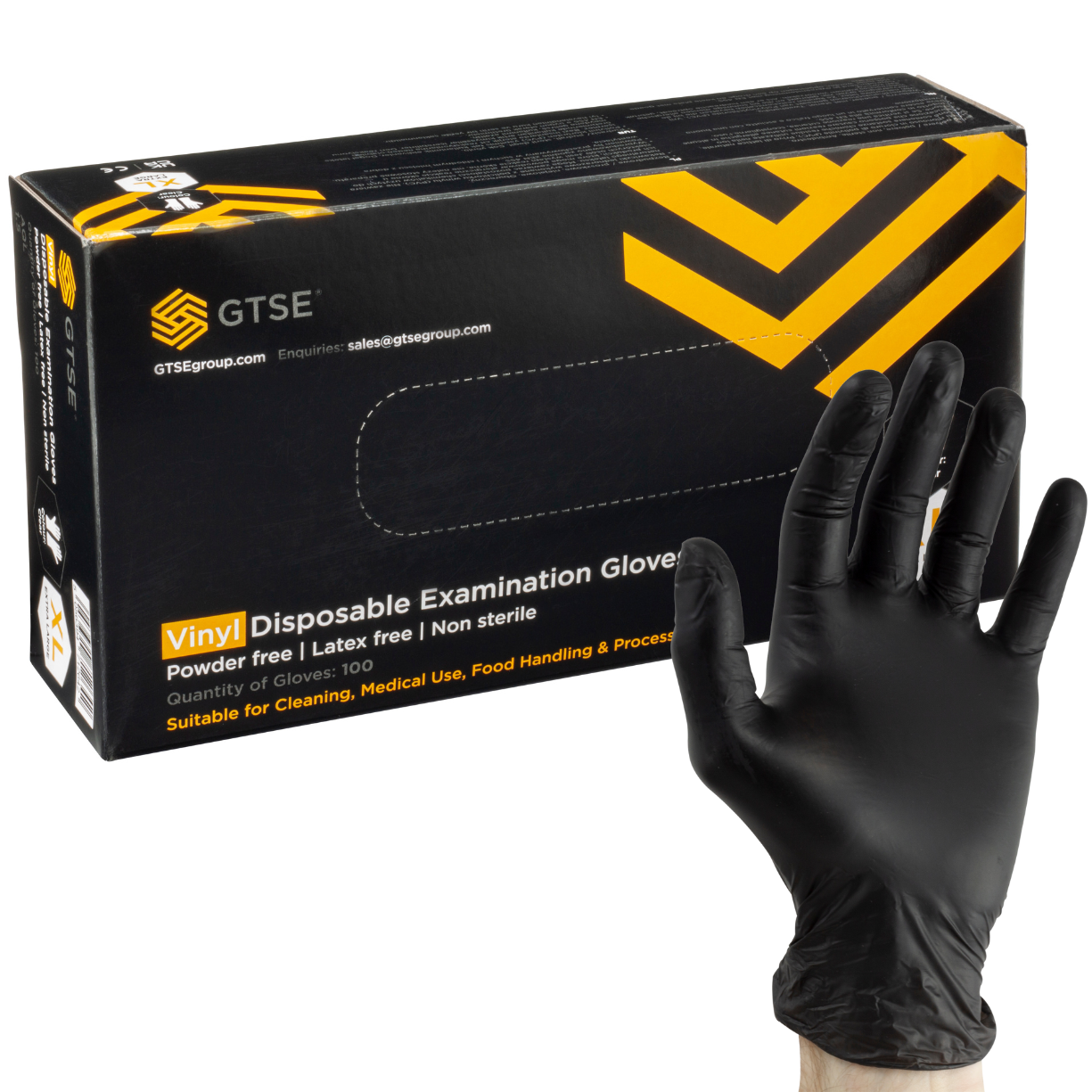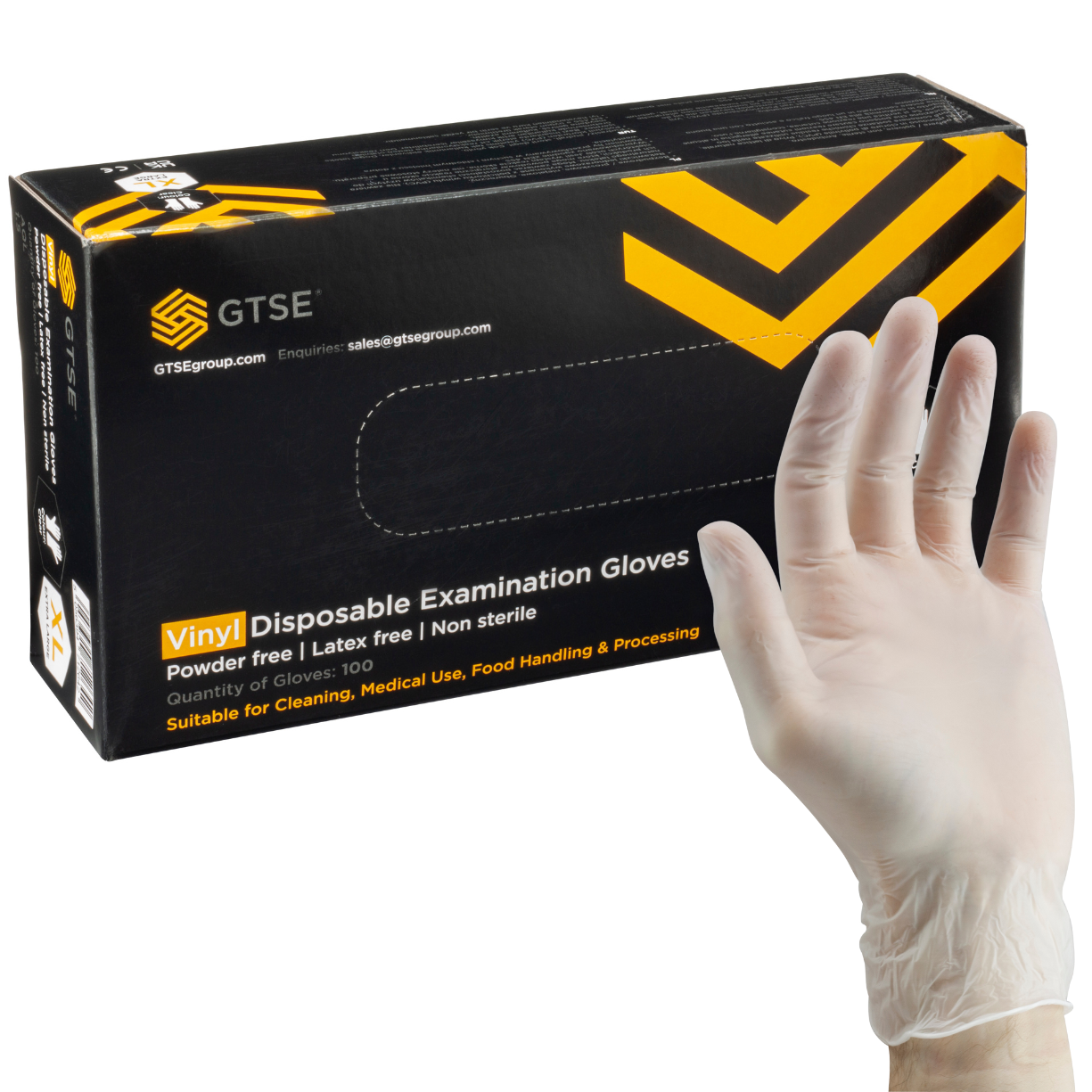Disposable Gloves
Disposable gloves are gloves that can be used one time and thrown away. They are used to protect yourself and the person you are using them on. They play an important role to reduce the spread of bacteria and viruses across all industries. Disposable gloves should not be used to protect yourselves from sharp objects but to help prevent infections from body fluids or handling hazardous chemicals.
There are different types of gloves made with different materials. The 3 most common types used within the industry are nitrile, vinyl and latex. These gloves have a slight difference in the role they play and its uses.
Nitrile gloves also known as medical-grade gloves offer a high-level of protection against blood borne pathogens, corrosive substances and chemicals. Nitrile gloves are safe to use against blood borne pathogens therefore making it very popular in the healthcare industry. They are made from copolymer nitrile butadiene rubber which is a material made from bonding two chemicals called acrylonitrile and butadiene. These chemicals give nitrile gloves their chemical resistance and flexibility features.
Nitrile gloves are also great as it is tear and puncture resistance so it will require some force to damage these gloves and it will not go unnoticed and you are able to deal with a replacement quickly. Due to this feature, nitrile gloves not only useful in the medical field but also the mechanical and automotive industry. They can also be used in the beauty industry to protect the skin against harmful materials and as well as the tattooing and piercing where blood may be present.
Latex gloves are most common type of disposable gloves used a lot in the medical world due its ability to protect wearers against bloodborne pathogens as well being comfortable to wear and flexible to use. They are made from latex rubber which makes the gloves highly flexible, malleable and offering a high level of touch sensitivity. Which makes these gloves the ideal option when performing skilled tasks such as surgery, dental work and medical examinations.
Even though nitrile offer excellent protection, latex gloves are offer better elasticity and touch sensitivity. Latex gloves are not as good nitrile gloves when it comes to tear and puncture resistance as when this does happen, the tears can go unnoticed which can become a hazard.
Latex gloves can also be used in spas, food industry, DIY & home improvement, care setting and any other scenarios where you need to keep hygiene. The problem with the latex gloves is that people can have allergic reactions to the latex material, so people need to be cautious when using this type of disposable glove.
Vinyl gloves are the most cost-effective option out of the disposable gloves as well as being the most widely available. These gloves aren’t suitable for high-risk tasks where there is a risk of infection or use of corrosive materials.
Vinyl gloves aren’t designed for long wear but for quick use. They are also not as resistant to blood borne pathogens as latex and nitrile gloves so medical use that includes exposer to blood is not a safe use of these gloves. However more routine medical inspections are a suitable use of them.
They are ideal and best suited for cleaning operations and other tasks which doesn’t involve chemicals. Vinyl gloves are also ideal to use within the food industry which require a high level of hygiene. But when it comes to handling fatty food, vinyl gloves should not be used. Fatty food makes the plasticisers in the PVC evaporate and make the gloves soluble. These gloves are also anti-static and prevents shock so in some cases electricians use vinyl gloves for their work.
Generally, vinyl gloves are cheapest and easy option when you need temporary protection at a low-risk task. They are ideal against low-level hazards, maintain good level of hygiene and minimize cross-contamination.
Brief summary on the differences
|
|
Nitrile Gloves |
Latex Gloves |
Vinyl Gloves |
|
Flexibility |
Highly flexible |
Highly flexible |
Highly flexible |
|
Touch sensitivity |
Highly touch sensitive |
Highly touch sensitive |
Highly touch sensitive |
|
Chemical resistance |
High tolerance |
Medium tolerance |
0 to Low Tolerance |
|
Latex-free |
100% |
0% |
100% |
|
Tear resistance |
High resistance |
Medium resistance |
Low resistance |
|
Puncture resistance |
High resistance |
Medium resistance |
Low resistance |
|
Affordability |
Premium |
Affordable |
Cheap |
|
Safe against blood borne pathogens? |
Yes |
Yes |
No |
|
Food safe |
Yes |
Yes |
Yes |
|
Material |
Copolymer Nitrile Butadiene Rubber |
Latex rubber |
Polyvinyl Chloride |








